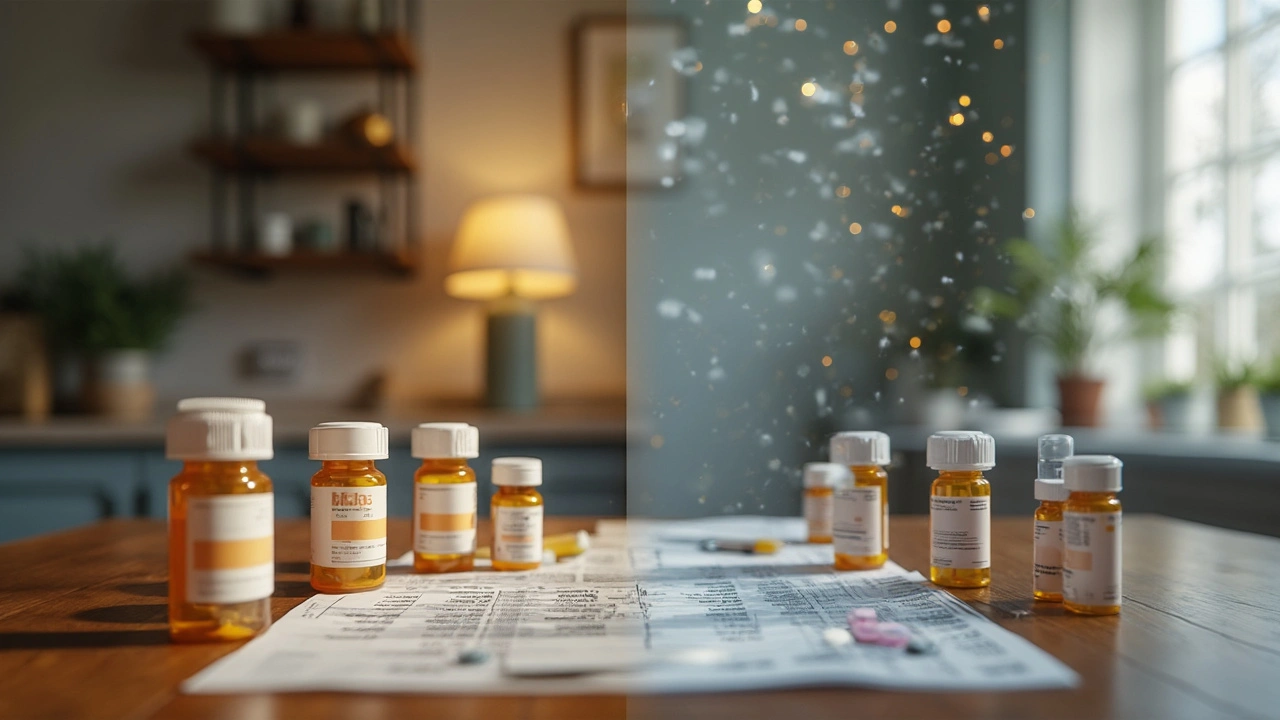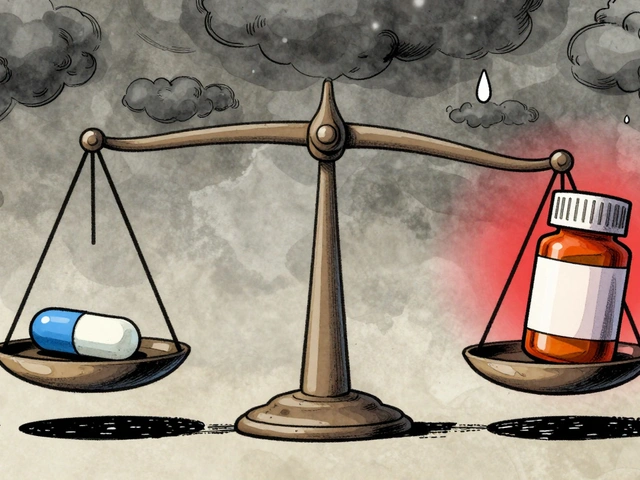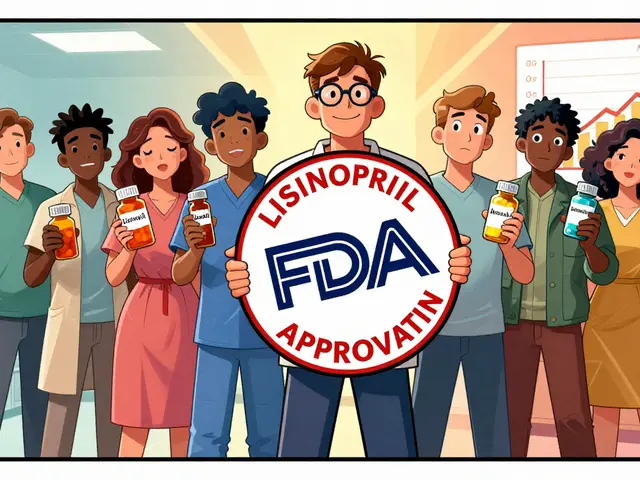
When it comes to beating alcohol dependence, every option has its trade-offs. Disulfiram (you might know it by Antabuse) stands out for its unique, sometimes brutal, approach—drink and you might get violently sick. But here’s the thing: it’s not a magic bullet. Plenty of folks either can’t tolerate it or just can’t stick with it. So what actually works if you take disulfiram out of the equation?
Maybe you or someone you love struggled with the daily decision to take that little white tablet, weighed down by motivation (or the lack of it), and wondered if there’s something that works—not just in theory but in messy, everyday reality. Let’s cut through the noise and look at what’s on the table if you skip disulfiram: which meds have actual staying power, what kind of side effects could throw a wrench in your plans, and, frankly, how much it’s all going to cost you.
Efficacy of Leading Disulfiram Substitutes: Naltrexone, Acamprosate, and Others
Let’s start with the frontrunners. Over the last decade, two names keep popping up: naltrexone and acamprosate. Why? Because major studies—and the day-to-day experience of doctors and patients—say both have clear-cut benefits, but they don’t work the same way as disulfiram. Instead of making you sick if you drink, these meds mess with how your brain and body respond to alcohol.
Naltrexone is a favorite of many addiction specialists in Australia, the US, and Europe. Its main claim to fame: it reduces the urge to drink by blocking opioid receptors in your brain, which dulls the “feel-good” buzz from alcohol. If you’re someone who relapses not because you love the taste but because you can’t fight that urge, naltrexone might be up your alley. Real-world studies show that people taking naltrexone manage to cut back on heavy drinking days—sometimes by over 30% compared to sugar pills. The oral tablet is popular, but the monthly injection (Vivitrol) is gaining ground, especially for people who struggle with daily pills.
Acamprosate takes a different route. Instead of blocking the pleasure of drinking, it works to rebalance brain chemicals that get thrown out of whack during alcohol withdrawal. The result? Less anxiety, fewer mood swings, and more stable sleep—classic triggers that make people relapse. Acamprosate has a solid track record for keeping people sober once they’ve already stopped drinking. However, you have to pop a pill three times a day, which can be a dealbreaker for folks who hate complicated routines.
What about other options in the mix? Topiramate and gabapentin, both originally developed for seizures, have shown promising results in smaller studies. Topiramate can blunt cravings and even help manage binge drinking patterns, especially in younger adults. Gabapentin is seeing more use lately, especially in Australia, as doctors notice its positive impact on sleep and anxiety in recovering alcoholics.
If you’re looking for the raw numbers, take a look at this quick comparison of effect sizes from recent trials. “Reduced heavy drinking days” refers to the drop in binge drinking versus sugar pills.
| Substitute Medication | Reduction in Heavy Drinking Days | Improvement in Abstinence Rates |
|---|---|---|
| Naltrexone | 30-40% | Moderate |
| Acamprosate | 20-35% | Strong (post-detox) |
| Topiramate | 25-45% | Moderate |
| Gabapentin | ~20% | Mild-Moderate |
| Disulfiram (for comparison) | Variable | High (if adherent) |
No replacement perfectly matches disulfiram’s “use it, don’t drink” approach. But the substitutes aim at what most people actually struggle with—cravings, relapse stress, and the day-in, day-out challenge of not slipping back to old habits.
Side Effects and Safety: What to Expect from Disulfiram Substitutes
If you ever talked to a mate who tried Antabuse, you’ve probably heard one or two horror stories. One guy I met at support group said he’d rather stick his hand in a nest of funnel-web spiders than risk taking even a whiff of alcohol on disulfiram. That fear, genuinely, keeps some people off it for good—or searching for an alternative.
Naltrexone is usually pretty mellow in the side effects department, but that doesn’t mean it’s totally smooth sailing. About 10–15% of people deal with some nausea, headaches, or stomach issues in the first few weeks. Liver function can take a hit if you’ve got pre-existing problems, so most docs run liver tests before and during treatment. Less commonly, you could run into sleep problems or weird dreams, but those usually calm down as your body adjusts.
Acamprosate offers a pretty gentle side effect profile, which is likely why it’s so popular, especially for folks with lots of medical problems. The biggest complaint? Diarrhea and mild stomach cramps. Maybe not glamorous, but not exactly nightmare fuel either. There’s almost zero impact on your liver or risk for interactions with other meds, so it’s often the default choice for older adults or folks dealing with multiple medications.
Topiramate is where things get interesting—but not necessarily in a good way for everyone. It’s notorious for causing “cognitive fog”—think word-finding troubles, slower thinking, or embarrassed forgetfulness. Some people get tingling in their fingers or a dull, carbonated drink taste. A small number develop kidney stones if they’re not good about staying hydrated.
Gabapentin is mostly used off-label, and while the risk profile looks friendlier than old-school tranquillizers, you can’t ignore the drowsiness, unsteady gait, and, in some unlucky cases, swelling in the ankles. Here’s a direct comparison, breaking things down:
| Medication | Common Side Effects | Serious Risks |
|---|---|---|
| Naltrexone | Nausea, headache, insomnia | Liver toxicity (rare) |
| Acamprosate | Diarrhea, stomach cramps | None significant |
| Topiramate | Tingling, cognitive issues | Kidney stones (rare) |
| Gabapentin | Drowsiness, dizziness | Dependency (rare) |
So here’s a tip from someone who’s been there with friends—if you’re sensitive to meds, or you’ve had bad luck with side effects before, bring it up at your doctor visits. Sometimes just switching to a morning or evening dose can smooth things over, or you can start slow and ramp up gradually. And if you’re worried about interactions because of other prescriptions, make your GP part of the team. Nobody likes surprises, least of all with your health.

The Real Cost of Switching: Australian Prices, Insurance, and What to Ask Your Doctor
Now, let’s talk dollars—and I’m not talking Monopoly money. The first shock for many people comes when the pharmacy hands you the bill, especially if you expected a dirt-cheap generic.
Here in Australia, both naltrexone and acamprosate have PBS (Pharmaceutical Benefits Scheme) listings, which can knock the price down to maybe $6.70–$42 per month, depending on your health care card and concession status. But not everyone’s eligible, and coverage can change, so double-check with your pharmacist or check the PBS online.
Topiramate and gabapentin, since they’re technically being used “off-label” for alcohol relapse, aren’t always covered. That can mean paying retail—think $50 to $150 a month, depending on pharmacy markup, unless your doctor can wrangle a special authority prescription.
The monthly injection of naltrexone (Vivitrol) is the real wallet-buster, topping $900 per jab if insurance doesn’t step in. This is a huge hit for anyone, and some clinics have waiting lists or funding support, but access remains patchy outside major urban centers.
This is a good moment to mention the elephant in the room: adherence. Intensive medications like disulfiram only work if you take them (and avoid that slip of wine in your bolognese). The same goes for its substitutes. Out-of-pocket costs quickly stack up if you’re not truly committed—and honestly, chucking out half a bottle of unused pills stings for your wallet and your motivation.
Navigating Australia’s healthcare maze isn’t always easy. One trick is to ask for a detailed cost comparison from your GP or clinic nurse. Pharmacies sometimes price match, and you may find dispensaries attached to public hospitals that discount further. Don’t forget to look up local peer groups—a shout-out to my mate Chris in Newtown, who pointed me to a bulk-billing GP when we needed it most.
If you want to compare all the most relevant disulfiram substitutes in one spot—with current pricing, benefit stats, and practical pros and cons—there’s a solid guide at DrugMartDirect.
Tips and Insights from the Real World: Making Disulfiram Substitutes Work for You
You know what’s rarely mentioned in the glossy brochures? Real life. Let’s face it—medications are tools, not miracles. The difference between success and getting stuck often comes down to how you use them, who’s got your back, and what else you’re doing to heal, not just the pill itself.
I’ll use my own story here. My wife Laura sat by my side during countless doctor appointments as we weighed options. We heard from folks who’d done well on naltrexone, and others who couldn’t stomach it. Peer support, digital apps, and old-fashioned check-ins with a friend made a bigger difference than we ever expected. Even small wins—like my buddy Alan keeping a daily “sober streak” in his phone calendar—proved more powerful than any single medication.
If you’re serious about relapse prevention, stack the odds. Here are some street-smart, research-backed approaches:
- Write out your triggers, not just mentally, but on a scrap of paper or your phone. Pin it to your fridge.
- Use med reminders—put your pills next to your toothbrush or coffee mug. Out of sight means out of mind.
- If you’re on a tight budget, ask about splitting tablets or checking price comparison sites—it’s legal and safe for some meds, but double-check with your pharmacist.
- Tell a mate or family member you trust about the plan. Having Laura check in every few days kept me honest and grounded.
- Combine medication with counseling or group support like SMART Recovery or an online forum if AA isn’t your style.
The thing most people need to hear: you’ll have ups and downs. Missing a dose, facing a lousy week at work, or temptation creeping up usually aren’t deal-breakers unless you let them pile up. Forgive yourself, reach out, and keep course. Even switching from one disulfiram substitute to another is often part of the journey—not a failure.
One last tip to take with you: never hesitate to grill your doctor, pharmacist, or support worker about the trade-offs, the “what ifs,” and what to do in a crisis. Medicine isn’t a one-way street. The more you know, the better you’ll steer things, especially at 2 am when your support group’s asleep, but you’re not.
5 Comments
Shelby Larson
May 22, 2025 at 12:00 PM
I find it morally unacceptable to push expensive injectables on patients who can’t afford them; the pharma industry is clearly exploiting vulnerable addicts.
It’s not just about cost but also about transparency, and many clinicians overlook the hidden fees that end up on patients’ bills.
Definately we need stricter regulation to protect those who are already struggling with recovery.
Mark Eaton
May 22, 2025 at 12:41 PM
Stay focused on what you can control-set a reminder, keep a journal, and celebrate each sober day as a win.
Alfred Benton
May 22, 2025 at 13:48 PM
It is evident that the pharmaceutical establishment has engineered a dependency loop wherein patients are steered toward high‑margin formulations under the guise of clinical superiority.
The monthly depot injectables, while marketed as convenient, serve to lock individuals into a regimen that is both financially burdensome and clinically opaque.
Moreover, the selective disclosure of trial data raises serious concerns about the integrity of the evidence base supporting these agents.
Government oversight appears insufficient to curb this systematic exploitation, suggesting a collusion of interests that prioritise profit over patient welfare.
An informed public must demand greater transparency and accountability from both regulators and prescribers.
Susan Cobb
May 22, 2025 at 14:46 PM
While you paint the entire industry with a broad brush, it’s worth noting that many of these treatments have undergone rigorous peer‑reviewed studies and provide real benefits to a subset of patients.
The blanket condemnation overlooks nuanced data and the individual variability in response to therapy.
It’s not a conspiracy; it’s a complex medical landscape that requires balanced discussion.






Bernard Leach
May 22, 2025 at 11:10 AM
When you examine the way naltrexone interferes with mu‑opioid receptors you see a mechanism that directly reduces the reinforcing effects of ethanol.
This blockade means that each sip no longer delivers the dopamine surge that fuels craving.
Clinical trials spanning multiple continents consistently show a 30‑40 percent reduction in heavy drinking days compared with placebo.
The oral formulation requires daily adherence which can be a hurdle for some patients but the pharmacokinetic profile is predictable and side effects are generally mild.
Nausea and transient headaches appear in about ten percent of users and usually subside within the first two weeks of therapy.
Liver function monitoring is advisable for anyone with pre‑existing hepatic impairment because the drug is metabolised hepatically.
For individuals who struggle with daily pill burden the monthly injectable depot, Vivitrol, provides sustained receptor occupancy for four weeks.
Although the cost of the injection is high, insurance coverage in many regions offsets the out‑of‑pocket expense.
Acamprosate, by contrast, targets glutamatergic dysregulation that emerges during early abstinence rather than the reward pathway.
The three‑times‑daily dosing schedule maximises steady‑state plasma concentrations but can be a compliance challenge.
Side effects are largely gastrointestinal, with diarrhea reported more often than any serious adverse event.
Because acamprosate is excreted unchanged by the kidneys it poses little risk to liver function and does not interact with most psychotropic medications.
Topiramate and gabapentin are used off‑label and their evidence base is smaller, yet both have shown benefit in reducing cravings when combined with psychosocial support.
Topiramate’s cognitive side effects, such as word‑finding difficulty, warrant careful patient selection and hydration to prevent renal calculi.
Gabapentin’s sedative properties can be useful for sleep disturbances but clinicians should watch for the potential of dependence in long‑term use.